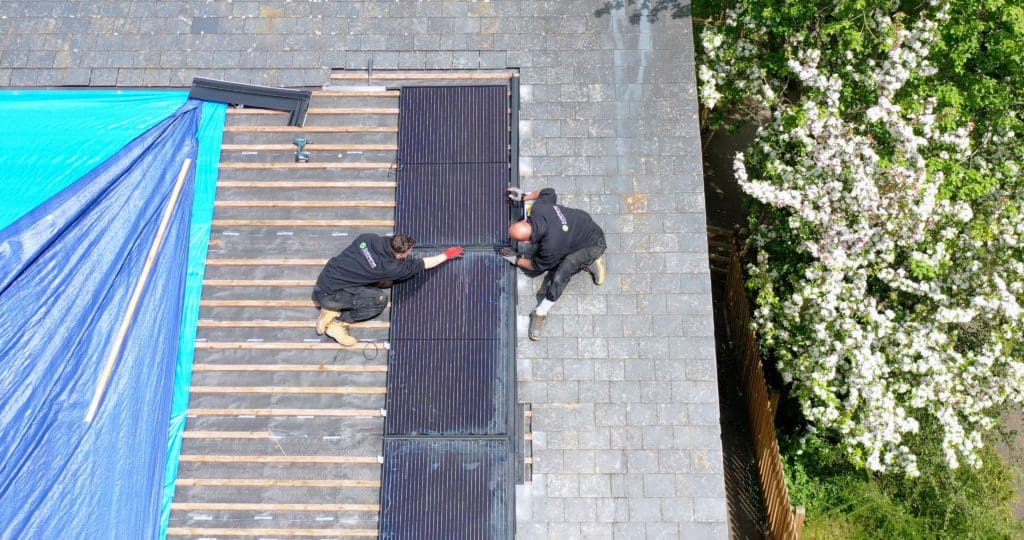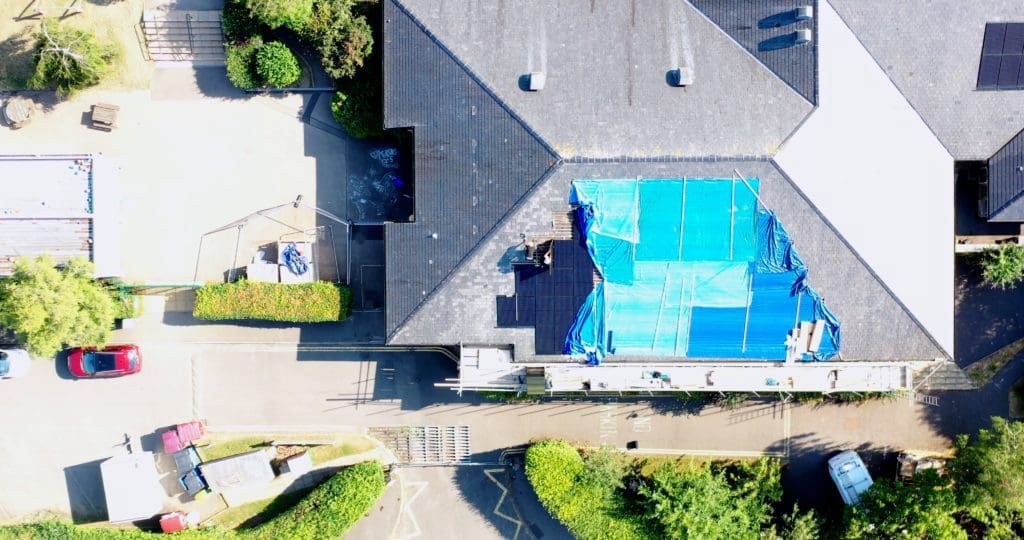This is one of the largest-ever deployments of the in-roof system from UK solar manufacturer Viridian Solar.
Solar energy specialist Solarsense was contracted by Gloucester Community Energy Co-operative (GCEC) to deliver the scheme, which has overcome major financial and technical hurdles to make the school’s eco project a reality.
The challenge
The school’s roof structure was deemed not strong enough the support traditional solar panels on top of its existing slates and so a Viridian roof was proposed to overcome the problem.
More commonly used on specialist applications or smaller units such as new build houses, the system has been successfully installed at a large scale by Solarsense engineers to provide a sleek new roof that will generate around 42,000 kWh per year. The original slates were removed and will now be sold to subsidise the project.
The solution
As well as using cutting-edge solar panel technology, the project also employed an innovative funding model to meet the upfront costs of the installation. The Diocese of Gloucester Academies Trust, which owns the school, agreed to lease its roof space to Gloucester Community Energy Co-operative (GCEC) which organised a community share sale.
The share scheme offered local people the chance to invest between £250-£10,000 in the project and receive 2.5% a year interest. The investment will be repaid over 25 years through the sale of electricity, after which point the school will enjoy free energy for the lifetime of the system.

The new solar roof will reduce the school’s carbon footprint by around eight tons annually and knock hundreds off its electricity bills. Half the energy produced will be used by the school with the rest supplying the local grid.
Reduce carbon footprint
Chair of GCEC, Peter Boait, said: “Getting to net zero requires everyone to act now to protect a future for our children. We cannot rely on the government to do it all. This project is a great example of what is possible when the community works together – we’ve been able to overcome financial and technical barriers to bring about a solution that is better for the planet and better for the school.”
Nick Moss, head of Minchinhampton Primary Academy, said: “We are absolutely delighted with our new solar roof. It’s going to allow us to reduce our carbon footprint, save money on our bills and help teach the children about green energy, while also providing a good return for investors. The project has been several years in the planning and it’s fantastic to see it all take shape – I’d like to thank everyone who has got behind us to make it possible.”
Stephen Barrett, managing director of Solarsense said: “It’s a real pleasure to be involved in such a fantastic community project. Our vision is to change forever the way that UK organisations are powered – switching large community buildings to solar energy makes total sense from both a financial and environmental point of view. I’m really proud of the way the team has worked to overcome technical challenges on this project and carry out the installation while working safely around the normal operations of the school.”
Green energy
Jamie Riddington, product support manager at Viridian Solar said: “We are really impressed with the scale and quality of this installation. Our PV16-335 G1 Clearline fusion roof integrated panels were used to ensure the highest quality and aesthetics.

“Going in-roof also makes panel maintenance easier as well as providing no entry points under the panels for birds to nest causing damage. We’re delighted that the new roof is enabling the school to benefit from green energy and reduce its carbon footprint, while still maintaining the original roof structure and smart appearance of the building.”
The completed project
The finished system includes a monitoring panel in the foyer of the school which enables teachers to use the solar roof as an educational asset for learning about green energy generation.
It is expected that the system will substantially reduce the school’s electricity bills during the lease period and could provide as much as half of the building’s electricity for free once the community investment is repaid.


